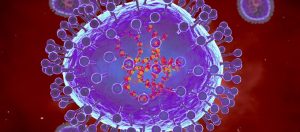The canine parvovirus virus infected about 2,000 pet and stray dogs in Amravati last month, prompting vets to warn pet owners about a serious outbreak.
So, what exactly is the Parvovirus?
It’s a highly transmissible infection that can be deadly in puppies and dogs. Canines’ digestive tracts are affected by parvovirus, with puppies being especially susceptible. Some of the symptoms include bloody diarrhoea, vomiting, rapid weight loss, dehydration, and fatigue. The virus has a 90% death rate, according to reports.
Also Read | Pandemic mystery: Scientists focus on COVID’s animal origins
Cases in Amravati
Last month, the virus infected about 2,000 domestic and stray dogs in Amravati, accounting for half of the city’s dog population. WASA Conservation, situated in Amravati and also a stray dog rescue centre, claimed the government-run facility is receiving daily reports of at least 20 dogs infected with the illness. Experts believe the recent increase in Parvovirus instances in pets is linked to the COVID-19 outbreak, which forced many pet owners to delay immunisation of their dogs. While the city’s parvovirus cases have risen in the last three years as a result of the city’s failure to implement the animal birth control programme, which helps control the stray dog population, dog vaccination and rabies cases have risen in the last three years as a result of the city’s failure to implement the animal birth control programme, which helps control the stray dog population.
While no official data on the number of deaths is available, 17 stray dogs died during treatment last month, according to data from an animal rescue organisation.
Also Read | Travelling with pets? Here’s how you can make your car pet-friendly
What are the symptoms of canine influenza?
Direct contact with an infected dog or indirect contact with a contaminated material, such as the hands and clothing of persons who handle infected dogs, is how the extremely contagious virus spreads. Sniffing, licking, or eating infected faeces can expose the canines to the parvovirus. When a person who has recently been exposed to an infected dog contacts the puppy, or when a puppy comes into contact with a contaminated object, such as a contaminated food or water bowl, collars, or leashes, it is known as indirect transmission.
How to keep canines safe from infection?
Inoculating a puppy or dog against parvovirus provides them a fighting chance against the infection. The first dose is administered at 45 days old, followed by the second dose 21 days later. To properly protect canines, the vaccine must be given to them when they are puppies, and then repeated every year.
On the road, stay away from other dogs
Veterinarians have advised owners not to take their puppies out unless they are fully vaccinated. They were also warned not to let the dog contact the ground. Because parvo is a resistant virus, it may readily survive in the environment and infect anything, even leaves and grass. Veterinarians have also advised pet owners not to pet or touch other dogs on the street, since the parvovirus can be spread through the touch and clothing of people who come into contact with infected dogs.






